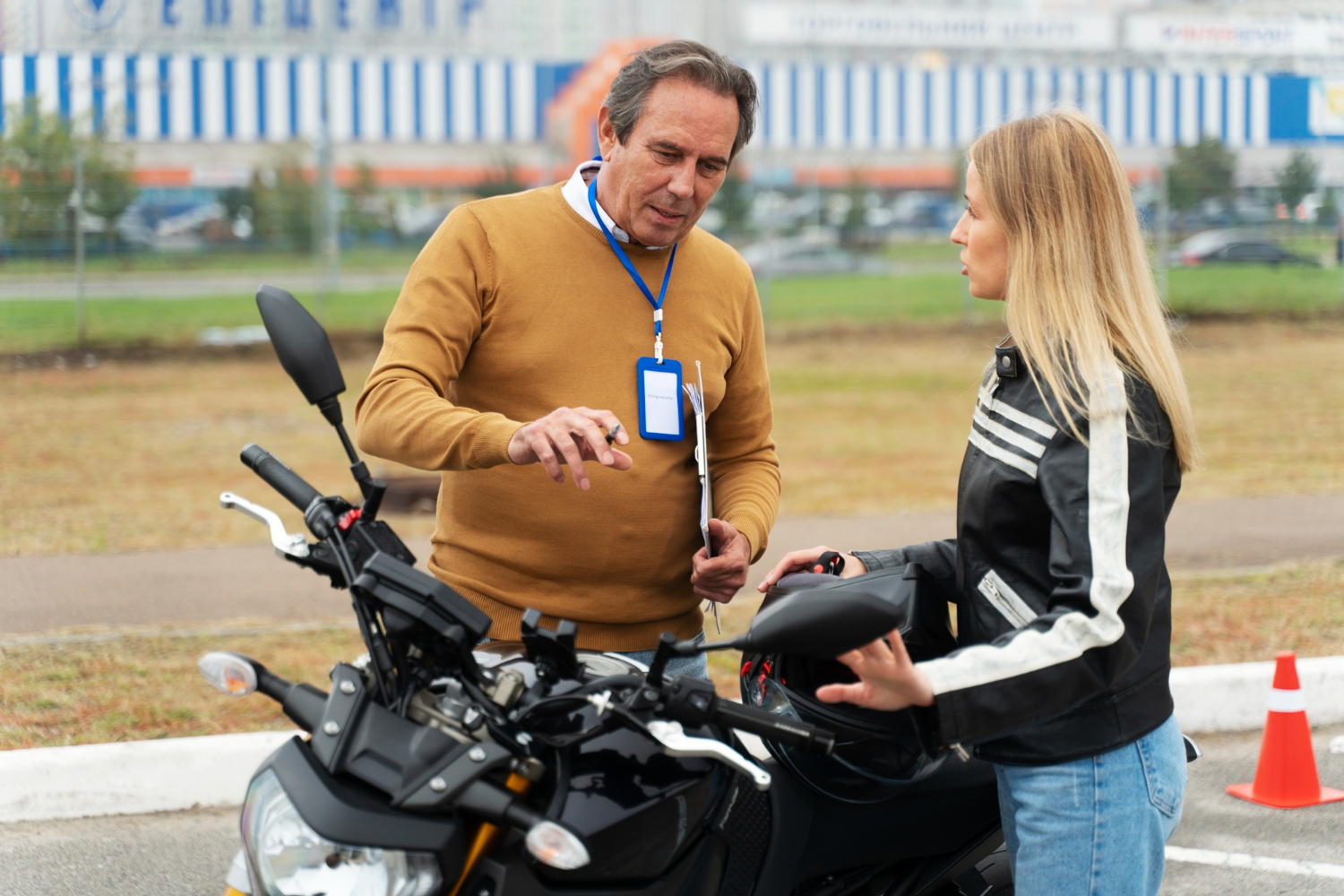When you’re getting ready for your motorcycle licence test in VIC, it’s easy to think the hardest part is learning the road rules or remembering the hand signals. But the weather plays a big role too, and it can be just as big a hurdle on test day. If you’re not ready for how different conditions feel on a bike, even the simplest manoeuvres can suddenly become tricky. Knowing how weather affects your ride can give you a real edge.
Victoria’s weather isn’t always predictable either. Late winter and early spring often bring wet mornings, gusty wind bursts or fog that hangs around longer than expected. It’s not just uncomfortable – it can change how your bike responds and how well you can focus. That’s why understanding common weather changes and what they mean for your riding makes a real difference when you’re trying to get that licence.
How Rain Affects Your Ride
Wet roads change everything. Braking takes longer. Corners feel slippery. And it can be harder to see, especially during any sections of the test involving traffic. Even if it’s just lightly drizzling on test day, your confidence and bike handling need to be sharp.
Here’s how rain can affect your test ride, and what you can do to stay safer:
– Reduced traction: Smoothed asphalt can turn slick when wet. Your tyres don’t grip the road as well, especially during tight turns, braking or gear changes.
– Braking takes longer: Keep a bigger gap from the vehicle ahead and ease into the brakes. Grabbing them quickly might make the wheels slide.
– Visibility drops: Rain on your visor, fogging up and spray from other vehicles all make things harder to see. Use anti-fog treatments where possible and practise keeping your head movements steady while scanning your surroundings.
If rain is expected, dress in waterproof gear that won’t leave you freezing or distracted. Do a few practice rides in wet conditions before the test. It’s not always enjoyable, but learning how your bike behaves in the rain makes the test feel less intimidating.
Challenges Of Windy Conditions
Wind can sneak up on you during your test too, especially where streets open up or if you’re passing between buildings. One strong gust can push your line off course, and that’s definitely not ideal when you’re performing slow speed manoeuvres or precise turning. Lighter riders and smaller bikes often feel the impact more, but everyone has to learn how to manage windy situations.
Here’s how you can ride better when wind shows up on test day:
– Lean into the wind gently: Don’t fight it stiffly. Shifting your body weight slightly and balancing through your hips helps you stay centred in your lane.
– Relax your grip: Stiff arms mean reduced control. A lighter grip gives you better feedback from the handlebars.
– Scan ahead for open spaces: Gaps in buildings, bridges and wider roads can be wind tunnels. Spot them before reaching those areas so you’re prepared to adjust.
– Adjust your speed: Slow down just a bit to give yourself a better chance of recovering if a gust nudges you off line.
Wobbling now and then in the wind is totally normal. The main thing is to stay calm and focus on smooth control. Whether you’re on a straight section or midway through a test circuit, relaxed riding helps manage whatever the wind throws at you.
Heat And Its Impact On Riders
Heat might not seem like a big deal during a VIC motorcycle test, especially in late winter or early spring, but quick bursts of warm weather are common and can catch you off guard. Sun beating down on you during a long wait or a midday test can make things tough.
Heat wears you down and drains your focus. Sweaty hands, damp gear and that sticky feeling under your helmet can affect how long you can concentrate. Add nerves, and fatigue sets in earlier than expected. That’s when mistakes happen, especially during low-speed exercises that require sharp attention.
Here’s how to stay in better shape if you get a warm one on test day:
– Keep hydrated from the night before through to test time. Sip small amounts regularly instead of waiting to feel thirsty.
– Choose protective gear with vents or mesh panels. There are lots of jackets made for warmer rides that still offer strong protection.
– Stick to lighter coloured clothing if possible – dark colours soak up heat faster.
– Try to arrive a bit early and rest in some shade if available. You’ll feel calmer going into the test if you’ve had time to cool before riding.
– Take off your gloves, jacket and helmet during wait times to stay cool when not riding.
Planning ahead for heat means you won’t waste energy fighting discomfort. You’ll have more left to focus on the riding itself.
Fog And Reduced Visibility On Test Day
Fog definitely adds another layer of pressure when it comes to test day. Visibility drops fast in dense fog, and even knowing where the road edges are can be a challenge. Not to mention how tough it is to see, react to and judge distances between vehicles and objects in those conditions.
If your test is scheduled for the early morning, especially near coastal or hilly areas in VIC, fog might very well make an appearance.
Here’s how to deal with it:
– Use your low-beam headlight. High beams are worse since they reflect off the fog and make vision even harder.
– Clean your visor and check it for scratches. Fog loves to cling to bad surfaces, making it even harder to ride with confidence.
– Use anti-fog wipes beforehand if you can. A fogged-up visor can ruin everything, especially when you’re trying to track road signs or complete tasks under pressure.
– Go a little slower than usual and increase your following distance.
– Overuse your mirrors and throw in more shoulder checks. The fog hides heaps, and it’s better to have looked twice than not at all.
The thing about fog is that it forces you into slower, more careful riding. That focus and calmness is actually what test examiners like to see. It’s not about blasting through with speed but keeping cool and staying steady.
Getting Ready For Any Test Day Weather
So you’ve read about rain, wind, heat and fog – what now? The trick is to expect that anything could show up, especially in VIC’s unpredictable climate.
You can’t control the skies, but you can control your response. Here’s a list of quick reminders to help you feel prepared no matter what gets thrown your way:
1. Check the forecast the evening before and again the morning of your test.
2. Pack both lightweight and waterproof layers. A mesh base with a waterproof top layer gives you options.
3. Make sure your visor is clean and doesn’t scatter light or trap moisture.
4. Practise manoeuvres in different weather well before the test. Even a short ride in light rain or wind can teach you loads about how your bike behaves.
Having a plan makes all the difference. Even if conditions change mid-test, you’ll feel more in control and less stressed because you’ve worked through it before.
Riding with Confidence Regardless of Weather
Test day nerves are normal, but they stack up fast when the weather adds new challenges. Whether it’s wind interfering with your balance, rain making corners feel slick or fog hiding signs, being ready means you’re not caught by surprise.
Prepared riders think ahead, not just about the test itself but how to stay balanced, focused and relaxed under all sorts of conditions. Practising rides in real-world weather and giving thought to gear, pace and vision all help build confidence.
At Stay Upright, we teach riders to think on their toes and adjust to whatever’s on the road – or in the sky. Knowing how to ride well in all sorts of weather makes you safer overall, not just on test day.
No matter what kind of weather test day throws at you, being prepared can make all the difference. You can build the skills and confidence you need by training for your motorcycle licence in VIC with Stay Upright, where we focus on real-world riding across all conditions. It’s not just about passing the test, it’s about riding safely long after it’s done.



